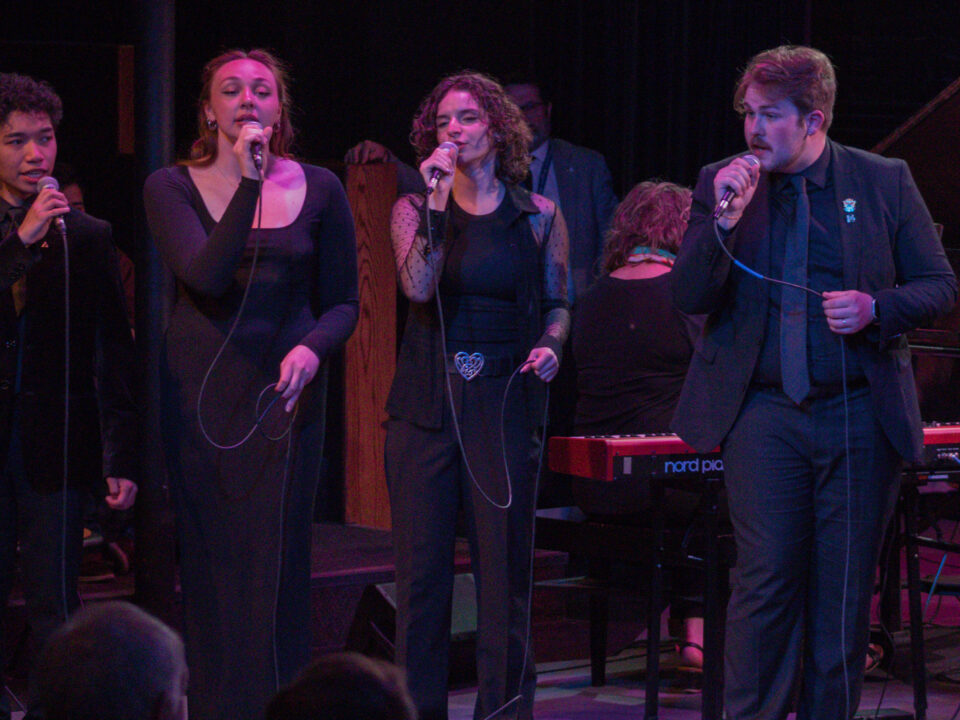Fantastical storytelling pairs with storybook directing in new Netflix shorts
Wes Anderson recently took on the daunting task of adapting four of Roald Dahl’s short stories. While each one was fantastical in its own way and each gave way to new inspiration for what adapting literary works can look like, they weren’t all created equal.
Spoilers ahead.
The Wonderful World of Henry Sugar | 5/5 stars
The first of my viewings was one that truly set a high standard for the shorts that followed. The story begins by introducing the main character Henry Sugar, a man consumed by wealth.
What sets this short apart truly is the Wes Anderson style of the piece. There are beautifully painted backdrops and painted set pieces to add depth to each shot.
There’s even a moment where one of the characters is supposed to be levitating, and upon a closer look, they’re actually just sitting on a box painted to blend in with the background.
These practical effects and lavish sets make this viewing stand out against any modern piece of cinema that relies heavily on CGI or greenscreens.
“The Wonderful World of Henry Sugar” had the longest runtime as well as the strongest theming out of all the shorts. More time is given to the characters, and the story itself holds up to today with its anti-capitalist sentiment.
With its strong narrative and stylistic elements, this one was by far my favorite out of the four.
The Swan | 4/5 stars
My second viewing took a tonal shift from the first one. The story follows a young boy being inhumanly bullied. It’s mostly told through the narration of an older version of the main character seemingly reliving this traumatic childhood moment.
“The Swan” carries strong visual storytelling. The film even brings in some of the animation style Wes Anderson is known for in a scene where the young boy is forced to walk out on a branch of a tree.
Despite this short’s darker tones and slightly ambiguous ending, the sentiment of the young boy never giving up was something that stood out even in the final moments of the film. While it wasn’t my favorite, it was definitely worth the watch.
The Rat Catcher | 3/5 Stars
This was the least favorite of my viewings, and it largely had to do with the lack of the visual elements that the other films fully embrace.
This story relies majority on the narration, and little happens visually to depict the words, which is something the other shorts rely on. For instance, the main character of “The Rat Catcher” is often seen without a crucial prop and instead mimes the actions being described.
There’s a moment when a ferret and rat are supposed to be climbing all over him, and I would’ve liked to see the animation brought back for this moment.
This one’s theme was interesting; however, as it represents the human fascination with horror. That being said, I felt this one lacked some of the imagination the others did, making it my lowest ranking.
Poison | 4/5 Stars
“Poison” has the strongest hook of all the films as it follows a man who visits his friend only to find out that a deadly snake is lying on him.
This short rivals “The Wonderful World of Henry Sugar” with its use of visual elements and practical sets.
Right off the bat, there’s a clear visual contrast between the warm tones inside the room of the man plagued with the snake versus the darker blues outside of his room, making for an aesthetically pleasing piece.
What held this short back from being my favorite was the ambiguous ending. It ends with the hint that the snake may have not existed at all, which makes all the events that happened prior meaningless.
That being said, I felt the representation of how real dreams can feel was accurate.
Review Rewind: Matilda (1996)
“Matilda” holds up as my favorite Roald Dahl story, and the movie’s portrayal is one that, though not perfect, stands out in my mind as a defining moment in culture.
I can vividly see the images throughout this movie, and as much as I enjoyed Wes Anderson’s take on these shorts, it can’t compare to the chokey scene in “Matilda.”
If you haven’t ever seen the film, or haven’t seen it since you were young, I recommend rediscovering that inner child and giving it a rewatch.


